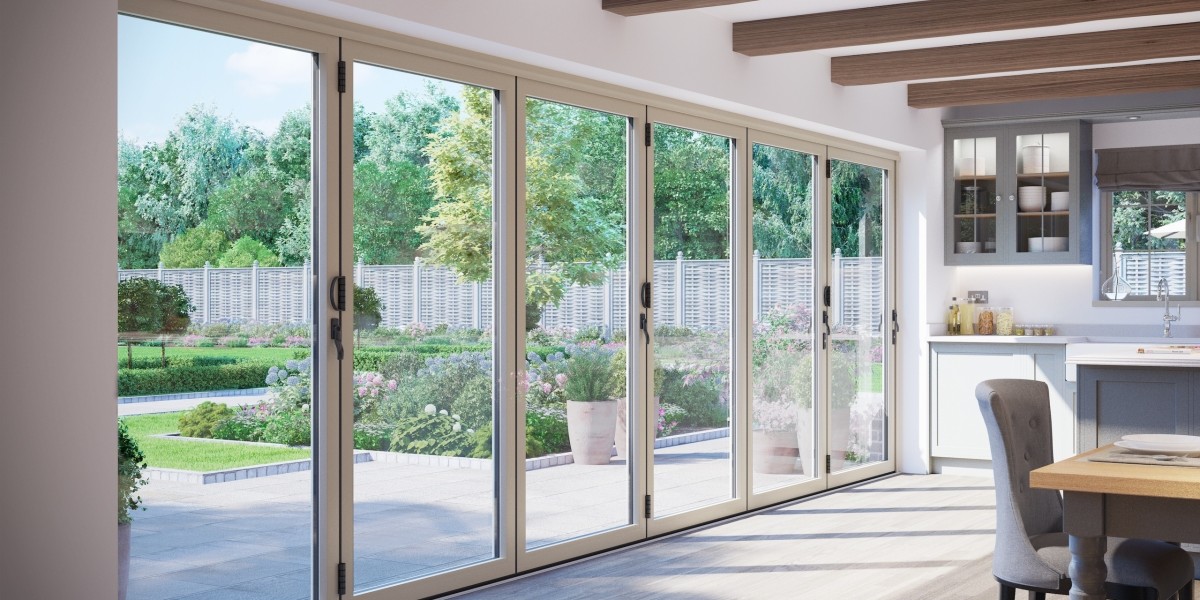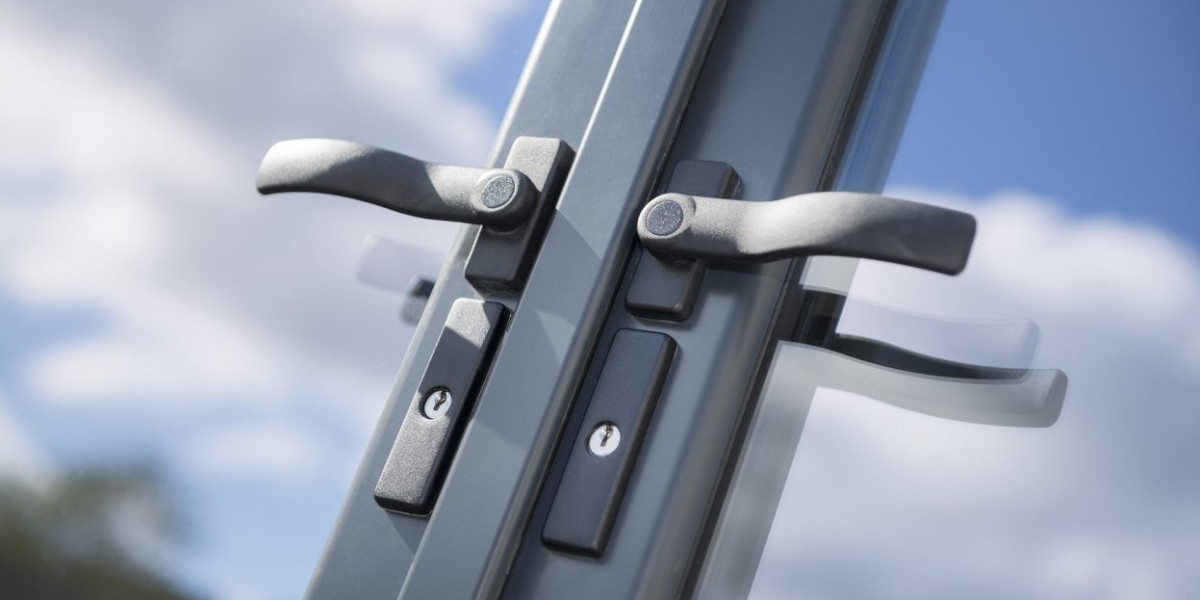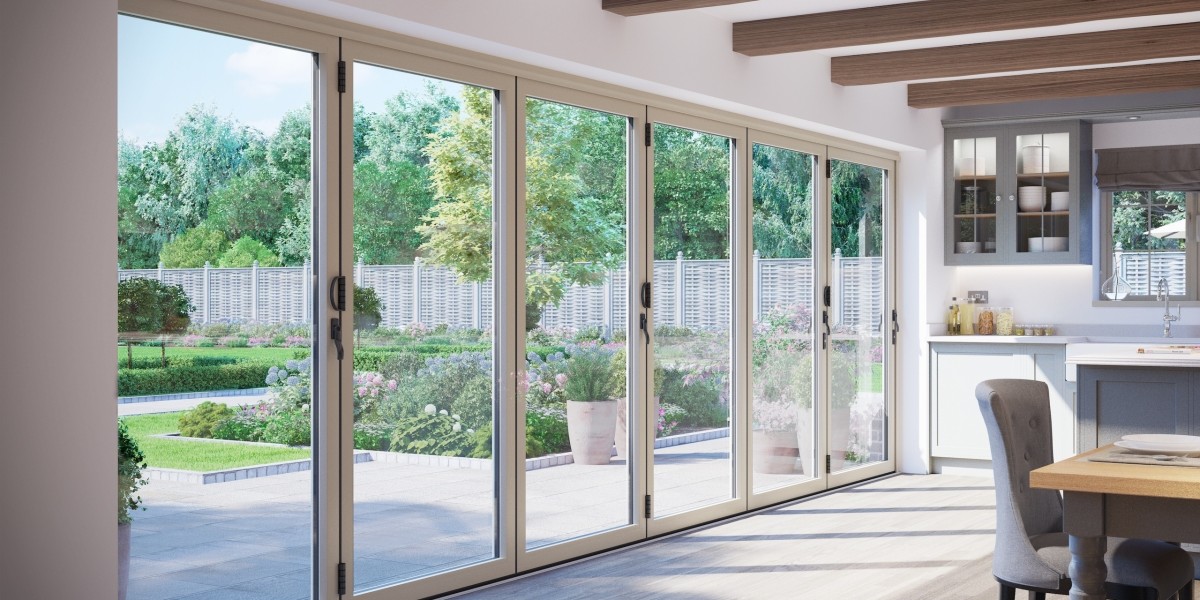Keeping Your Bi-Fold Doors Folding: A Guide to Common Repairs
Bi-fold doors, likewise referred to as folding doors, have ended up being a popular choice for homeowners seeking to perfectly mix indoor and outside living areas. Their capability to concertina neatly to one side uses a wide opening, taking full advantage of natural light and creating a sense of spaciousness. From patio entrances to room dividers, bi-fold doors improve both functionality and looks. Nevertheless, like any moving component in a home, bi-fold doors go through wear and tear in time. Regular use and environmental factors can lead to different issues that, if left unaddressed, can compromise their smooth operation and durability.
Comprehending the common issues that can develop with bi-fold doors and understanding how to tackle basic repairs is essential for keeping their efficiency and appeal. This article aims to provide an informative guide to common bi-fold door repairs, empowering homeowners to troubleshoot small issues themselves and acknowledge when professional intervention is required. We will explore the normal issues, offer detailed DIY repair recommendations, and talk about preventative steps to ensure your bi-fold doors continue to work perfectly for years to come.

Typical Bi-fold Door Problems: Identifying the Issues
Before trying any repairs, it's crucial to precisely diagnose the problem affecting your bi-fold doors. Typical concerns can vary from easy adjustments to more complex element failures. Here are some of the most frequent issues you might come across:
- Sticking or Stiff Movement: This is probably the most typical problem. Doors may become tough to open or close, needing extreme force. This is often triggered by friction, blockage in the tracks, or an absence of lubrication.
- Misalignment: Doors may appear irregular, not closing flushly, or rubbing versus the frame. Misalignment can originate from loose hinges, track issues, and even foundation settling over time.
- Harmed Hinges: Hinges are critical for the folding action. They can become loose, bent, or even break due to continuous usage or excessive force. Damaged hinges will make the doors sag or bind.
- Damaged Rollers or Tracks: Bi-fold doors depend on rollers sliding efficiently within tracks. Rollers can wear down, crack, or become jammed. Tracks can also end up being bent, dirty, or harmed, hindering smooth movement.
- Harmed Panels or Glass: While less regular, panels or glass panes can split or break due to effect or tension. This provides a security risk and needs instant attention.
- Drafts or Leaks: Gaps around the doors, specifically when closed, can result in drafts, water leakages, or increased energy bills. This could be due to damaged weather removing, misalignment, or warping.
Do It Yourself Bi-fold Door Repairs: Taking Matters into Your Own Hands
Numerous common bi-fold door problems can be addressed with fundamental DIY abilities and a few readily offered tools. Nevertheless, it's crucial to focus on security and take a detailed technique. If you are uneasy with any of these procedures, or if the issue appears complex, it's always best to speak with a professional.
Here are some DIY repair techniques for common problems:
1. Dealing With Sticking or Stiff Movement:
This is frequently the most convenient issue to fix.
Cleaning up the Tracks:
- Carefully inspect the leading and bottom tracks for any particles, dirt, or blockages.
- Utilize a vacuum cleaner with a crevice tool or a stiff brush to completely clear out the tracks.
- For persistent dirt, utilize a damp cloth and moderate cleaning agent. Ensure the tracks are totally dry later on.
Lubing Rollers and Tracks:
- Apply a silicone-based lubricant spray to the rollers and along the tracks. Silicone lube is chosen as it doesn't draw in dust and grime like oil-based lubricants.
- Open and close the doors a number of times to disperse the lube uniformly.
- Clean away any excess lube with a tidy fabric.
2. Correcting Minor Misalignment:
Slight misalignment can frequently be remedied with hinge or roller adjustments.
Changing Hinges:
- Locate the adjustment screws on the hinges. These are typically small screws on the hinge plates.
- Utilizing a screwdriver, carefully loosen up the screws a little.
- Gently change the bifold door repair expertise panel to realign it. You may need to open and close the doors a couple of times to check the alignment.
- As soon as lined up, tighten the screws securely, however prevent over-tightening.
Adjusting Rollers (if applicable):
- Some bi-fold door systems have adjustable rollers. Locate the adjustment mechanism (typically a screw or nut on the roller assembly).
- Utilizing the suitable tool, change the roller height a little to raise or lower the door panel as needed.
- Check the door motion and make more modifications until the door operates smoothly and is correctly aligned.
3. Hinge Replacement:
Replacing a damaged hinge is a moderately challenging DIY job.
Collecting Tools and Materials:
- New hinge of the appropriate type and size.
- Screwdriver (matching the screw type on your hinges).
- Pencil.
- Perhaps a drill and pilot drill bit if brand-new screw holes are needed.
Step-by-Step Hinge Replacement:
- Carefully eliminate the screws protecting the old hinge to both the door panel and the frame.
- Get rid of the old hinge.
- Position the new hinge in the exact same location as the old one.
- Line up the screw holes of the new hinge with the existing holes.
- If the screw holes align, place and tighten the screws to protect the brand-new hinge.
- If the screw holes do not align, use a pencil to mark the brand-new screw hole places through the hinge holes.
- Remove the hinge and pre-drill pilot holes at the significant areas using a drill and pilot drill bit (a little smaller sized than the screw size).
- Re-attach the new hinge and protect it with screws.
- Check the bifold door vertical adjustment motion to guarantee the new hinge functions correctly.
4. Attending To Minor Roller or Track Issues:
Cleaning and lubrication can typically fix minor roller and track problems. If rollers are visibly harmed, replacement might be required.
- (As described in Section 1) Clean and oil the tracks and rollers initially.
- Roller Replacement (if needed):
- Identify the type of rollers your doors utilize. You may need to get rid of a roller to take it to a hardware shop for matching.
- Depending upon the door system, you may need to partially disassemble the bifold door hinge replacement to access and get rid of the old roller.
- Install the brand-new roller in the reverse order of elimination.
- Ensure the roller is safely in place and moves freely in the track.
When to Call a Professional: Recognizing Limitations
While DIY repairs can be effective for lots of issues, particular problems require the proficiency and tools of an expert Bifold Door specialists repair service. It's prudent to seek expert help in the following circumstances:
- Complex Misalignment Issues: If adjustments to hinges and rollers do not deal with considerable misalignment, it could show a structural issue or a more complicated concern that requires expert medical diagnosis and correction.
- Broken Glass Replacement: Replacing damaged glass panes in bi-fold doors is a safety-sensitive job that should be managed by professionals. They have the competence and tools to securely get rid of damaged glass and install brand-new panes, guaranteeing correct sealing and security compliance.
- Structural Damage to the Frame: If you see cracks, warping, or other structural damage to the door frame, this is a severe issue that requires expert assessment and repair. Trying DIY repairs on structural components can be risky and jeopardize the stability of the door system.
- Concerns with the Locking Mechanism: Problems with the locking system, such as a jammed lock or a lock that does not engage appropriately, can jeopardize security. Expert locksmiths or door repair technicians can detect and repair intricate locking system concerns.
- Uncertainty or Discomfort: If you are unpleasant performing any of the DIY repairs explained above, or if you are uncertain about the nature of the issue, it's always best to err on the side of care and call an expert.
Preventative Maintenance: Extending the Life of Your Bi-Fold Doors
Proactive upkeep is essential to lessening repairs and making sure the long lifespan of your bi-fold doors. Executing a routine maintenance regimen can save you time and money in the long run.
Here are some important preventative maintenance ideas:
- Regular Cleaning: Clean the tracks and rollers a minimum of a couple of times a year, or more regularly in dirty or exposed environments. This avoids debris buildup that can cause sticking and wear.
- Lubrication: Lubricate the rollers and tracks yearly with a silicone-based lube. This keeps the doors moving smoothly and lowers friction.
- Examine Hinges and Screws: Regularly examine hinges for looseness and tighten up any screws that have actually ended up being loose. This prevents misalignment and hinge damage.
- Check Weather Stripping: Inspect weather condition stripping for damage or wear and tear and replace it as required to preserve weather tightness and energy performance.
- Mild Operation: Avoid slamming the doors or forcing them open or closed. Gentle operation decreases stress on hinges, rollers, and other elements, lengthening their life-span.
Bi-fold doors use a beautiful and practical addition to any home, bringing the outdoors in and creating versatile home. Comprehending common repair needs and carrying out standard upkeep practices are important for guaranteeing their continued smooth operation and durability. By following the DIY repair recommendations laid out in this article and recognizing when expert assistance is needed, you can keep your bi-fold doors folding effortlessly and improve your home for years to come. Remember, regular care and timely attention to small problems can avoid more pricey and complicated repairs down the line, maintaining the beauty and performance of your financial investment.
Often Asked Questions (FAQs) About Bi-Fold Door Repairs
Q1: How frequently should bi-fold doors be serviced?
A: A standard service, including cleansing and lubrication, must be carried out at least every year. In dirty or high-use environments, more regular servicing might be useful.
Q2: What tools are required for fundamental bi-fold door repairs?
A: For the majority of basic repairs, you will need:
- Screwdrivers (different types, including Phillips and flathead)
- Vacuum cleaner with crevice tool
- Stiff brush
- Silicone-based lube spray
- Potentially a moist cloth and mild detergent
- Possibly a drill and pilot drill bits for hinge replacement
Q3: Can I replace bi-fold door hinges myself?
A: Yes, replacing hinges is a DIY task for those comfortable with fundamental home repairs. Follow the detailed guidelines laid out in this post, ensuring you utilize the appropriate type and size of hinge.
Q4: How can I stop my bi-fold doors from sticking?
A: The most typical causes of sticking doors are unclean tracks and lack of lubrication. Frequently cleaning the tracks and rollers and using silicone lubricant will generally solve this concern.
Q5: How much does it cost to repair bi-fold doors expertly?
A: The expense of professional bi-fold bifold door broken hinge repairs differs depending upon the complexity of the problem, the parts needed, and the labor rates in your area. Basic repairs like track cleansing or roller replacement may cost in between ₤ 50-₤ 150, while more intricate repairs like hinge replacement, glass replacement, or structural problems can range from ₤ 200-₤ 500 or more. It's always best to get a quote from a competent door repair service for a precise price quote.







